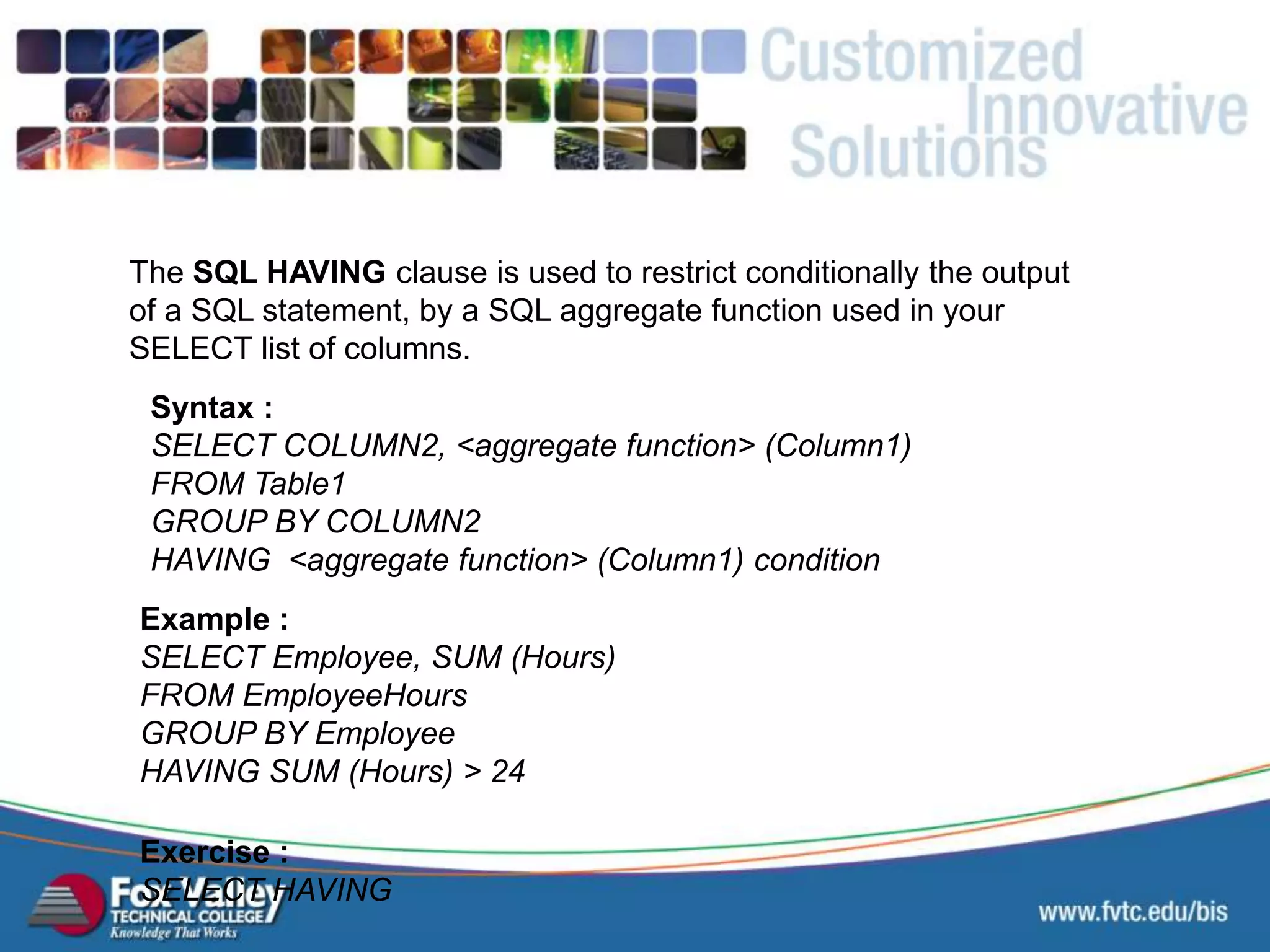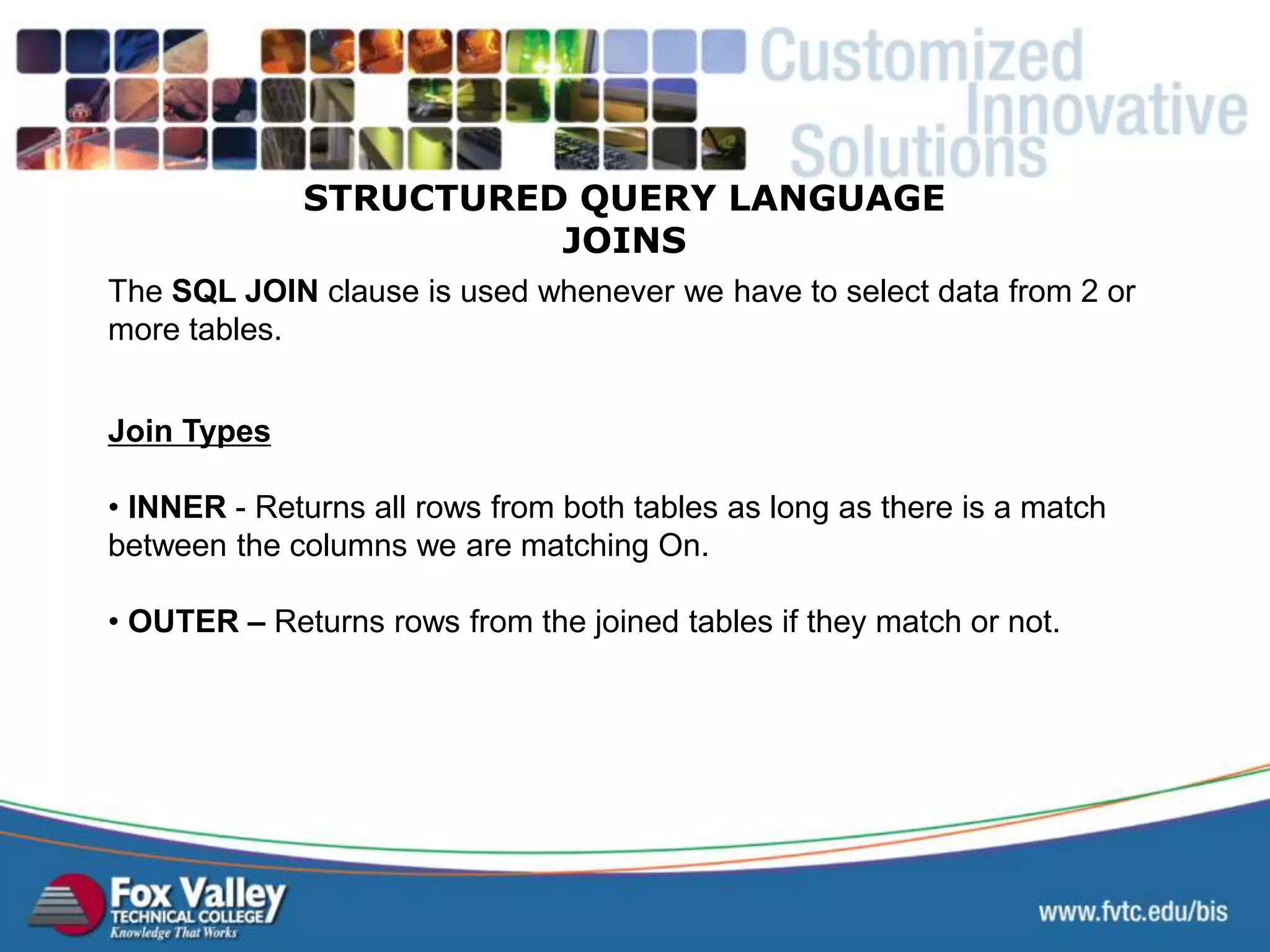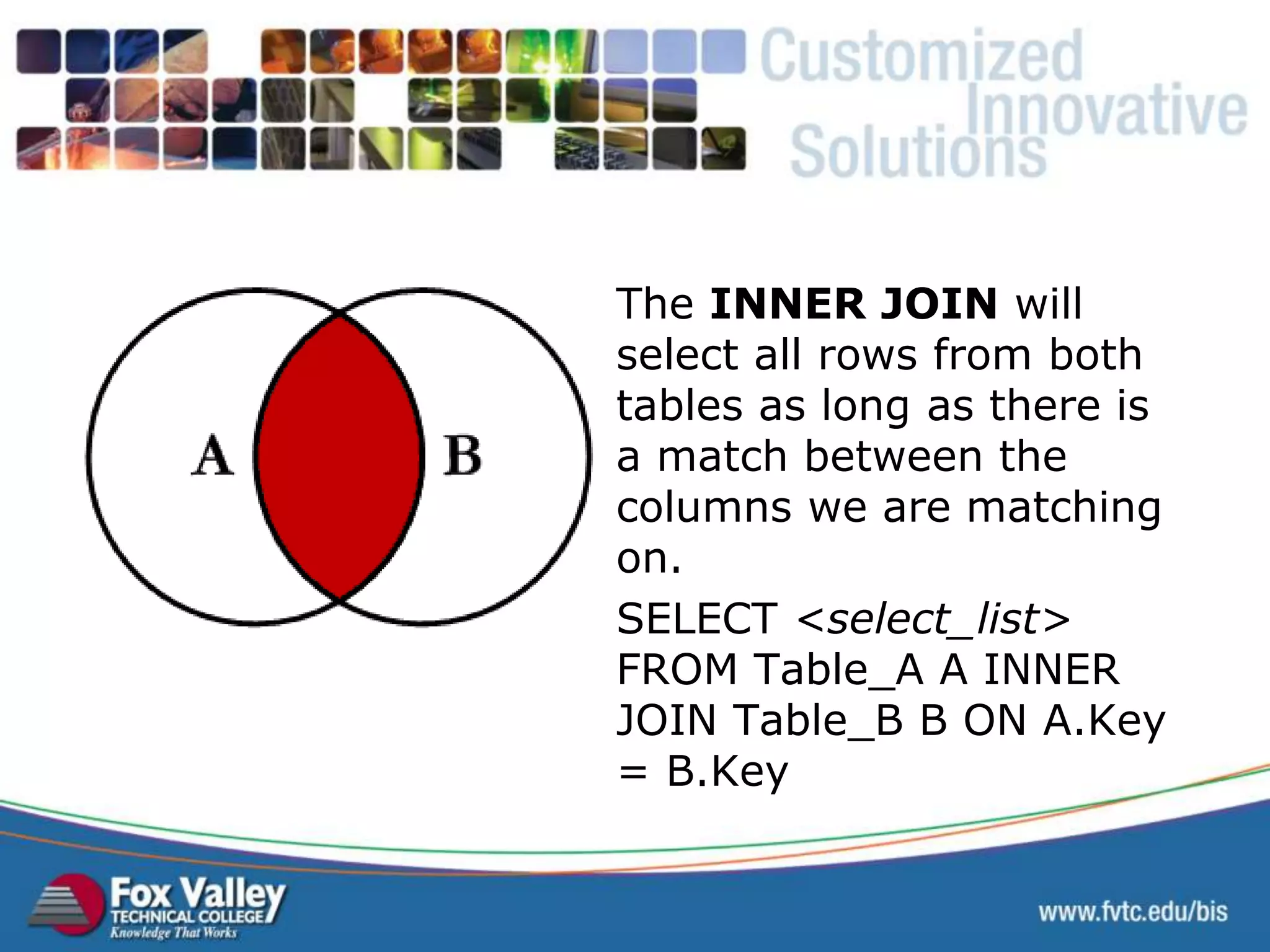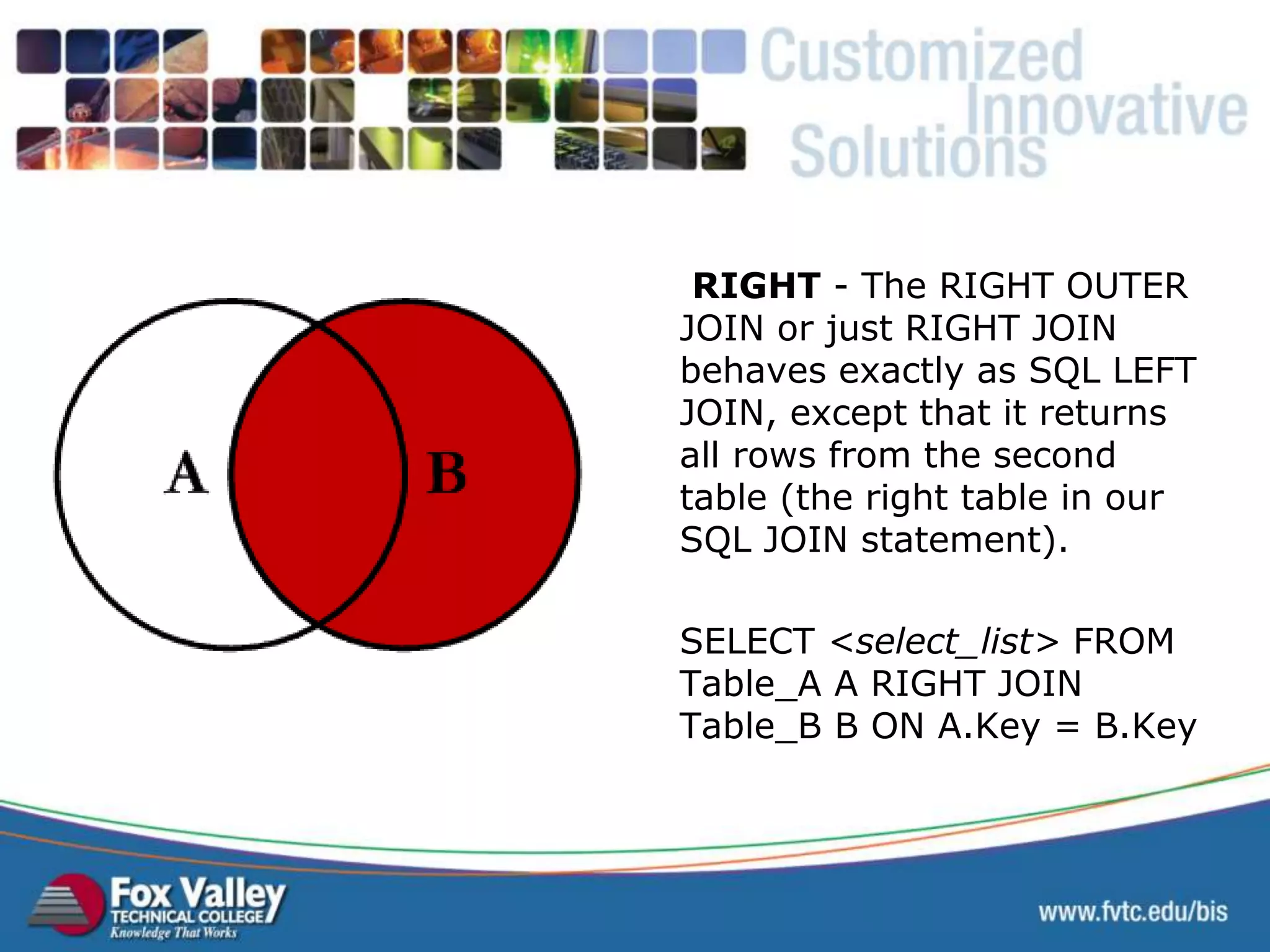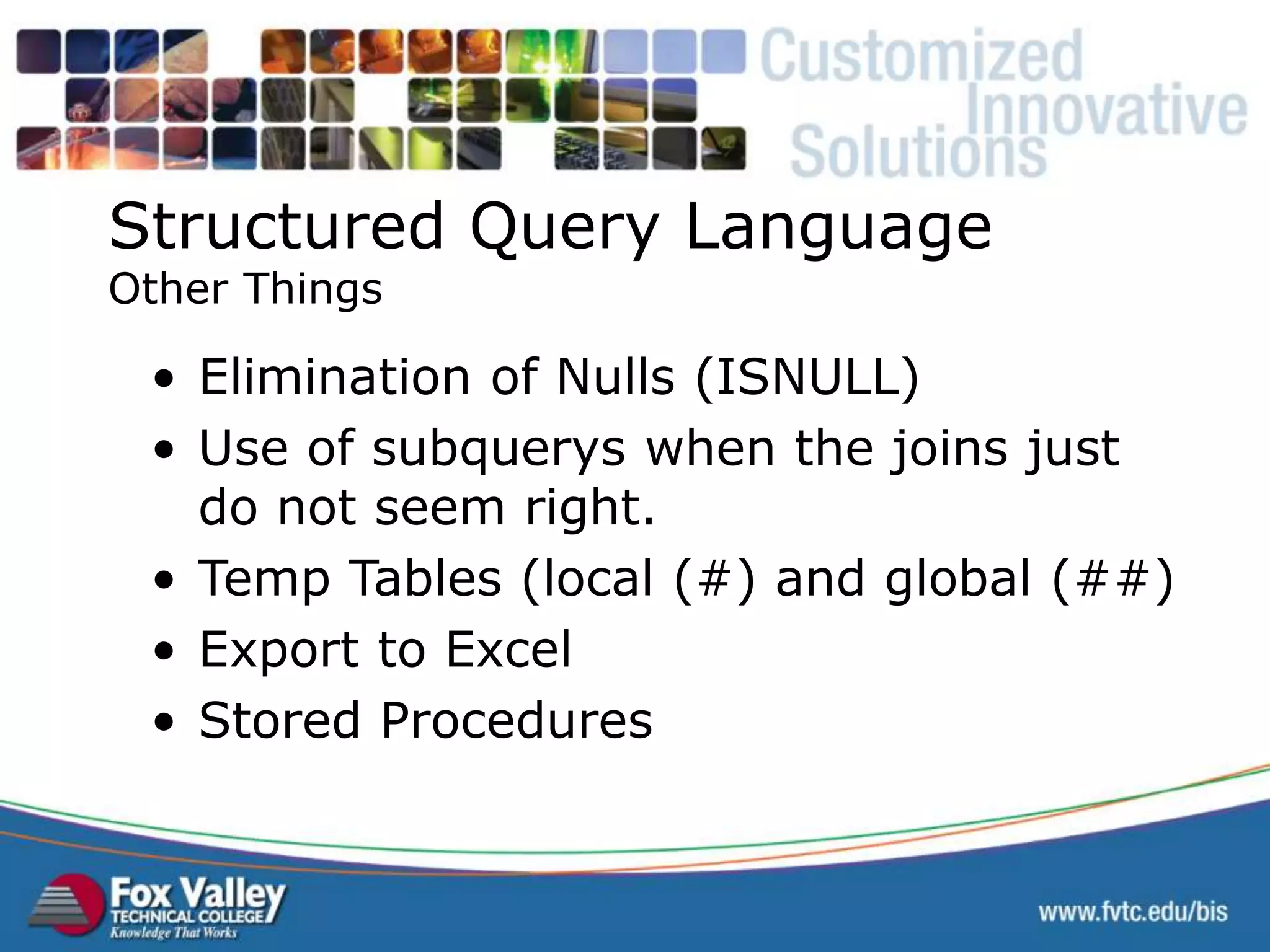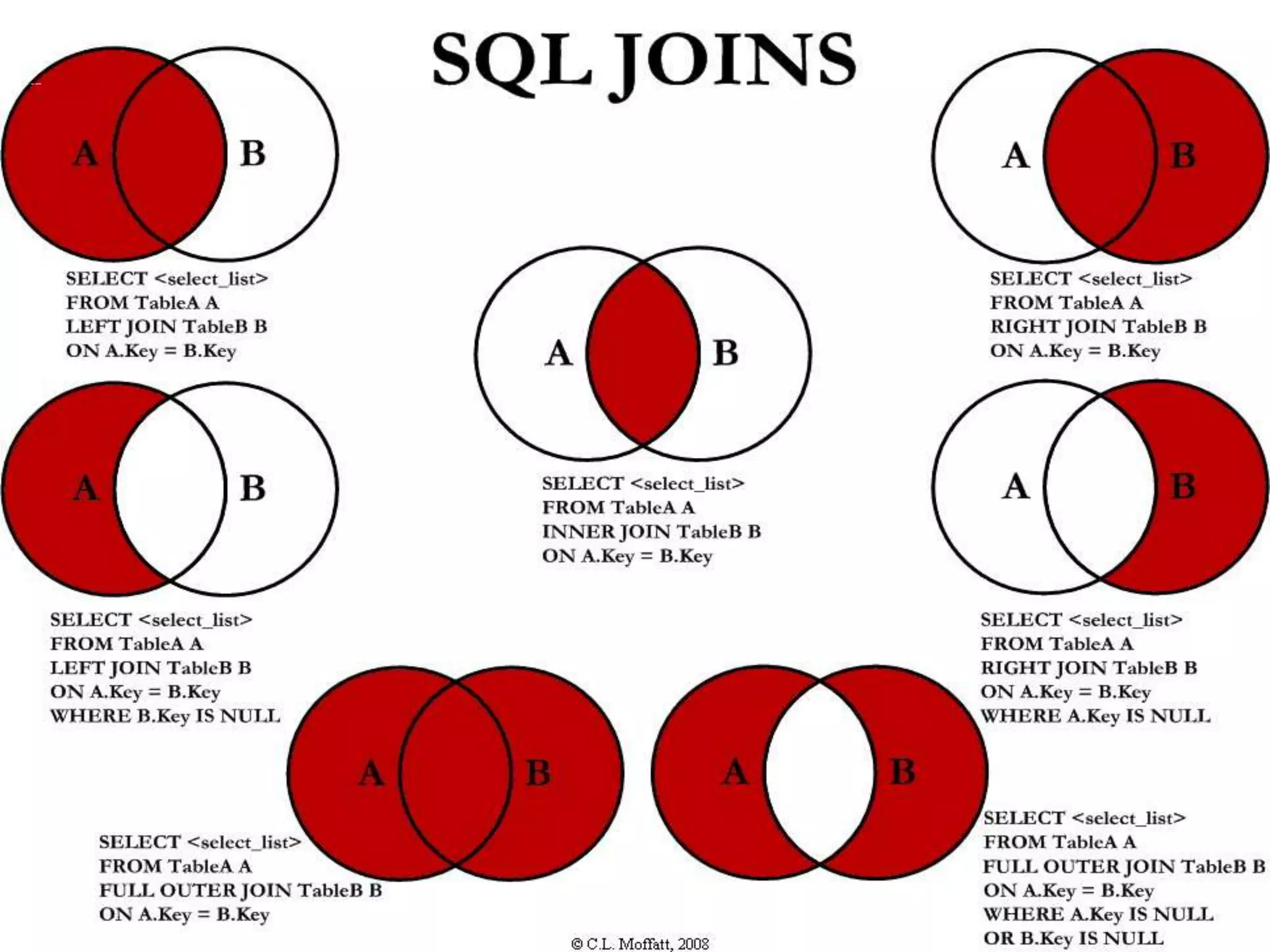This document provides an overview of Structured Query Language (SQL) and SQL Server by Brian Foote. It includes sections on SQL SELECT statements, joins, aggregate functions and more. The document covers basics like retrieving data from single and multiple tables, using ORDER BY, WHERE, and DISTINCT clauses. It also discusses aggregate functions like COUNT, MAX, MIN, AVG and SUM and using them with GROUP BY. Finally, it touches on other SQL topics like different join types, subqueries, temporary tables and exporting data to Excel.










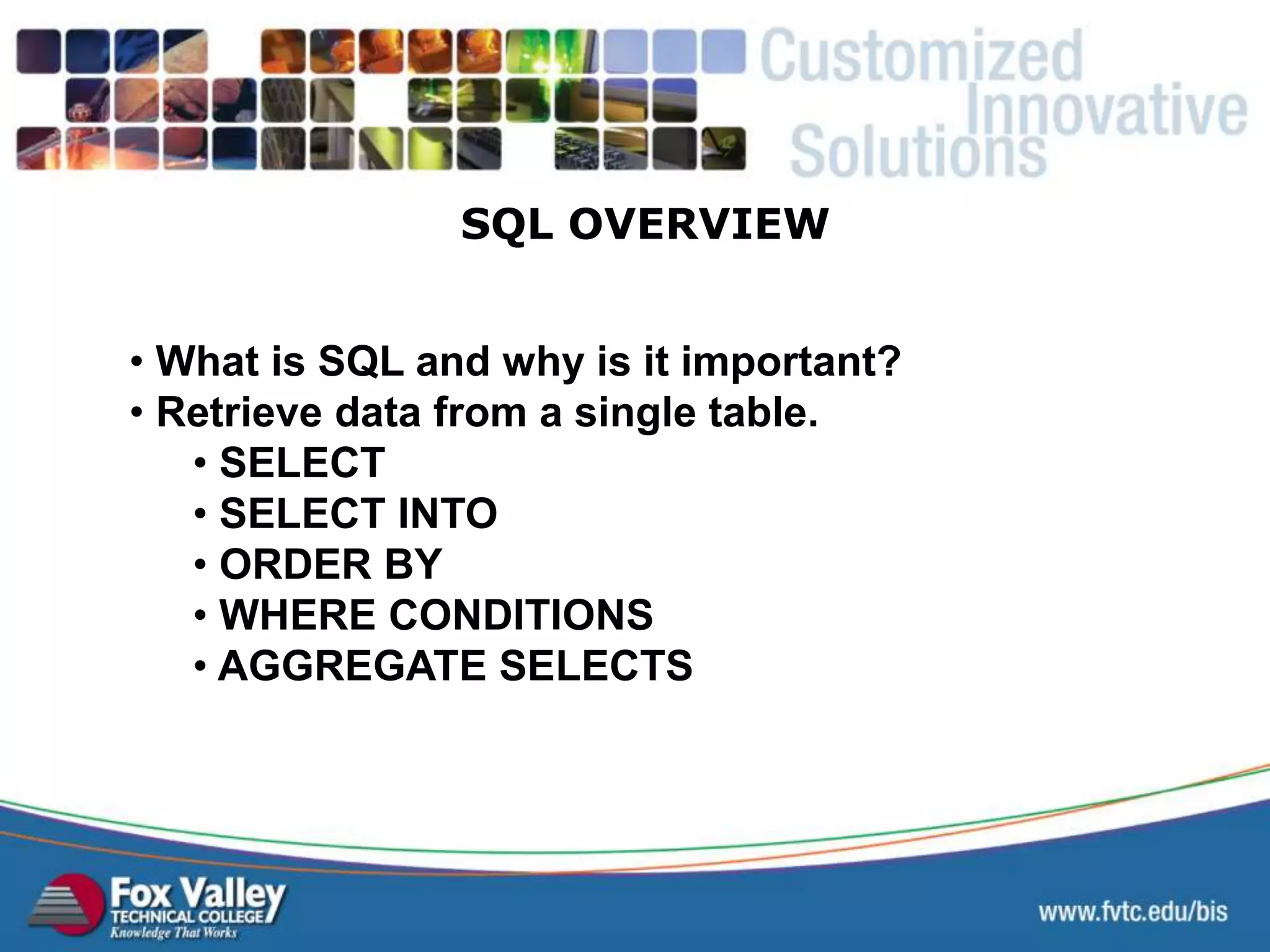
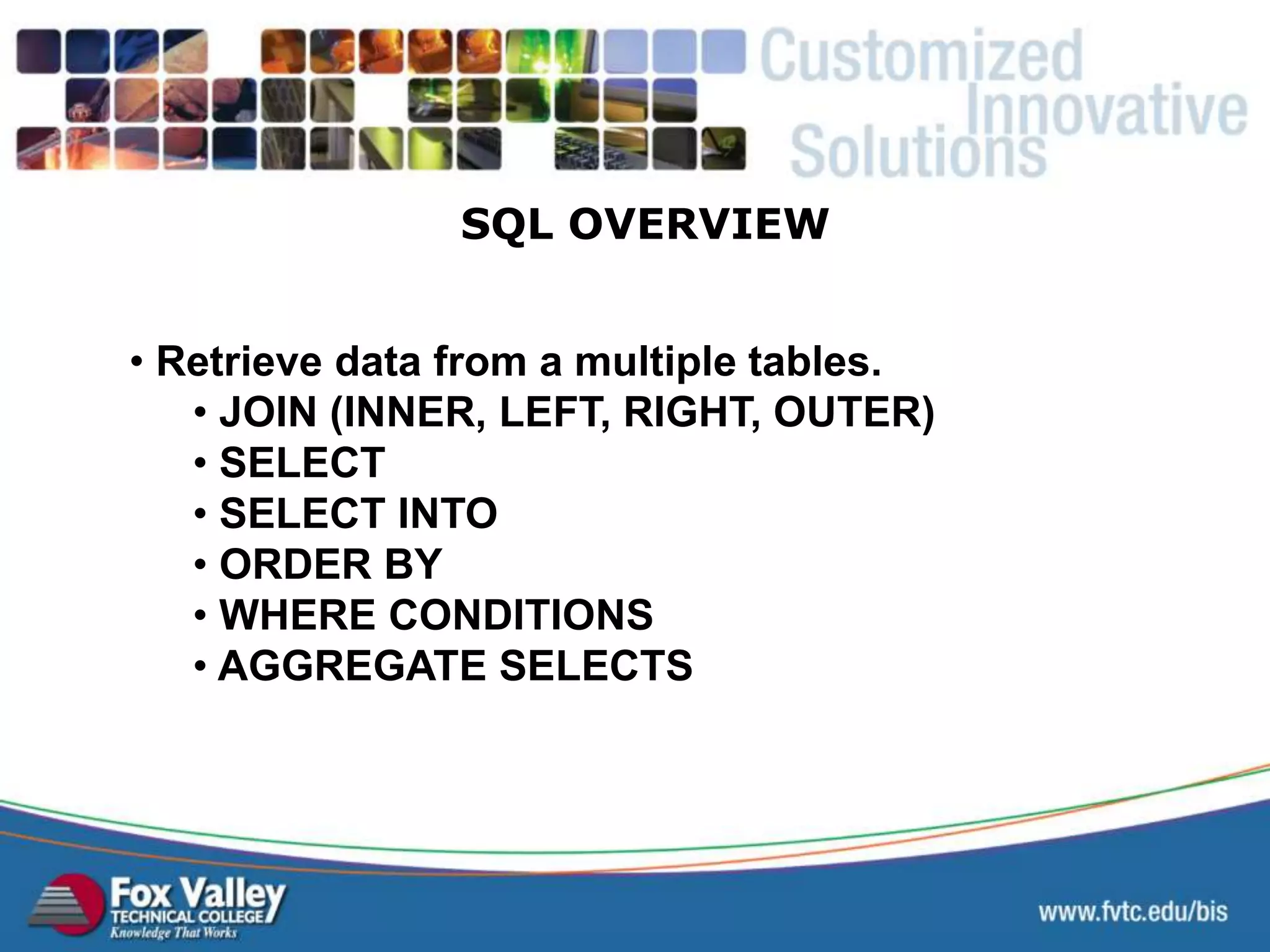


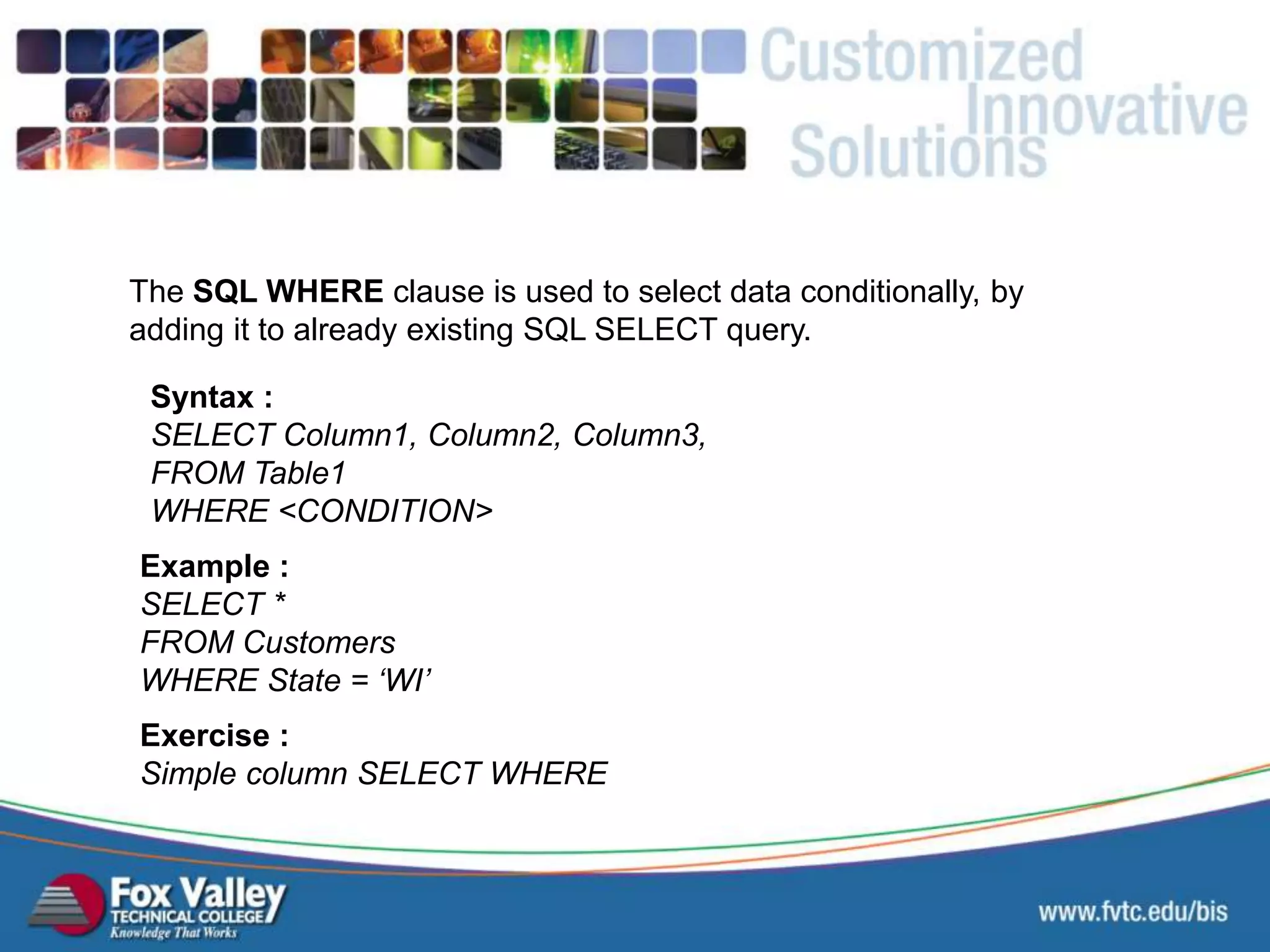
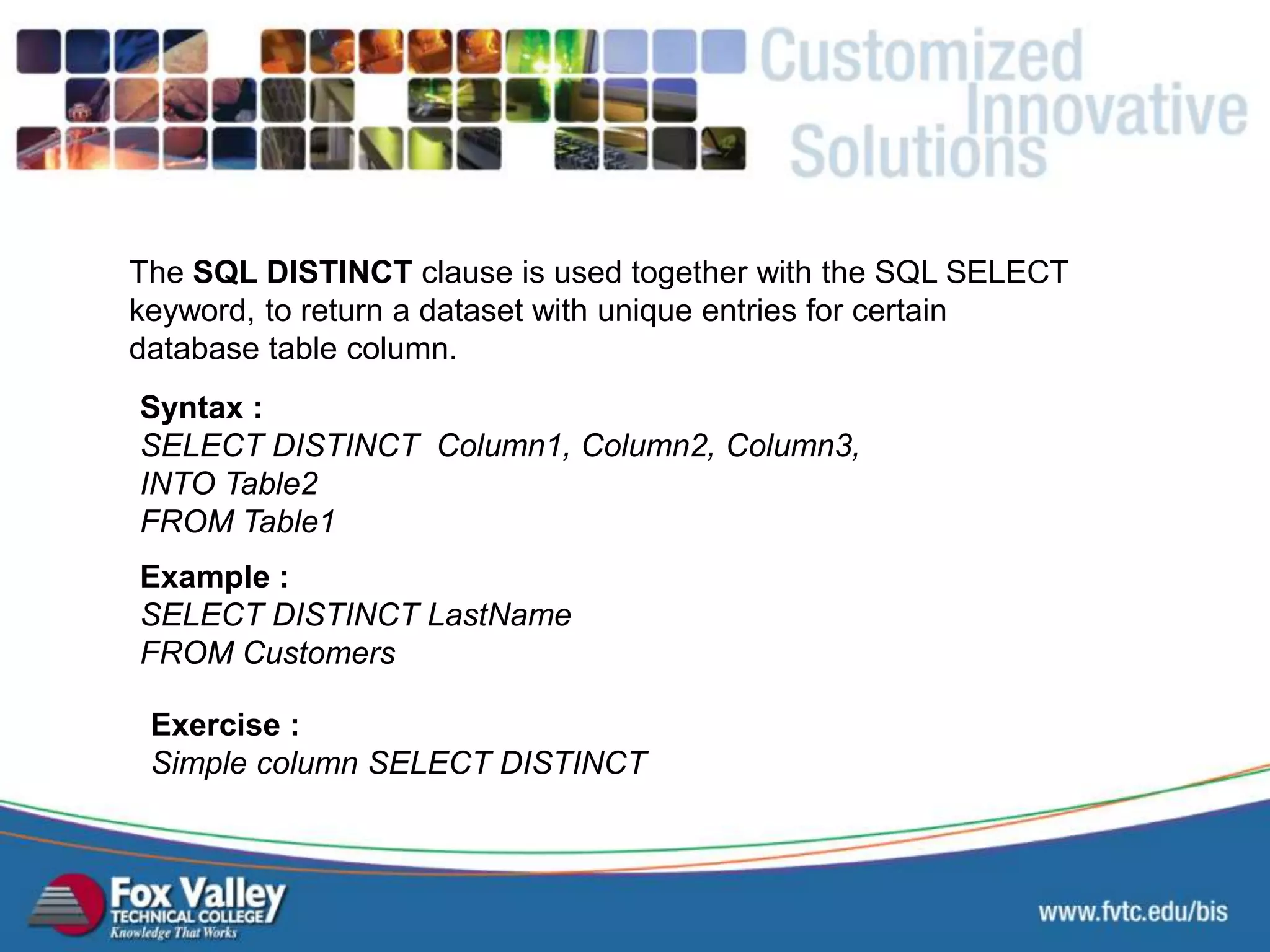
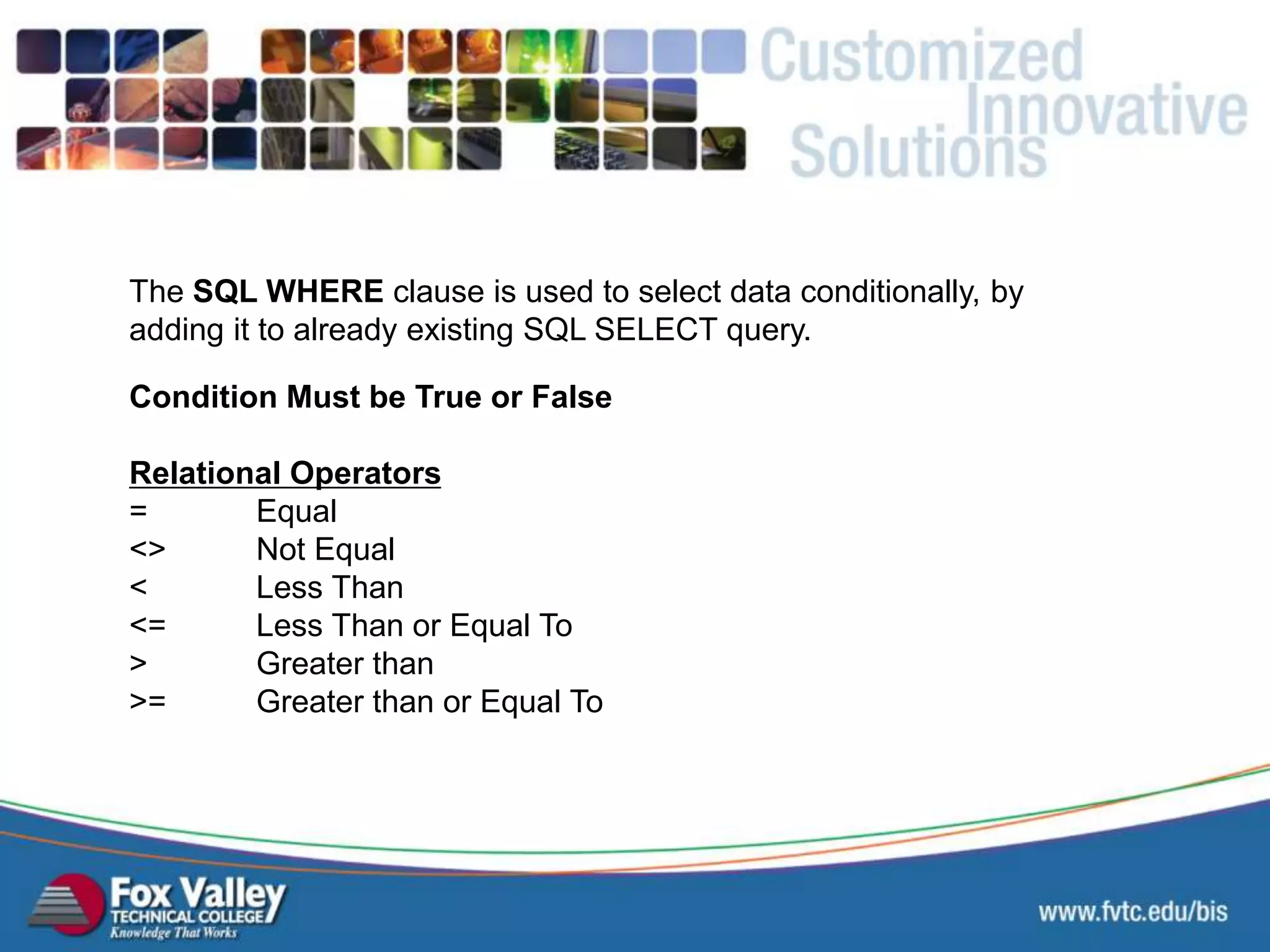
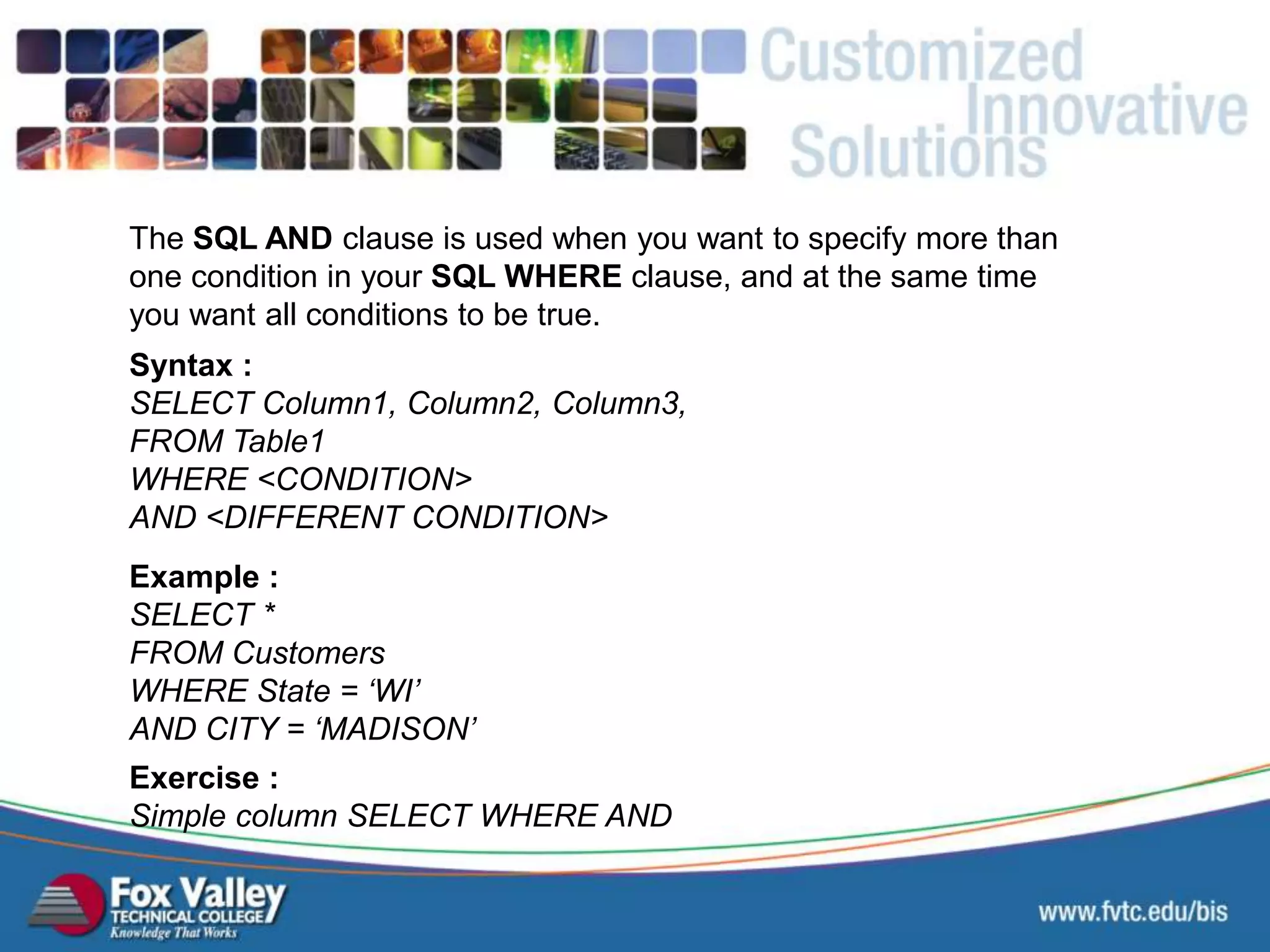
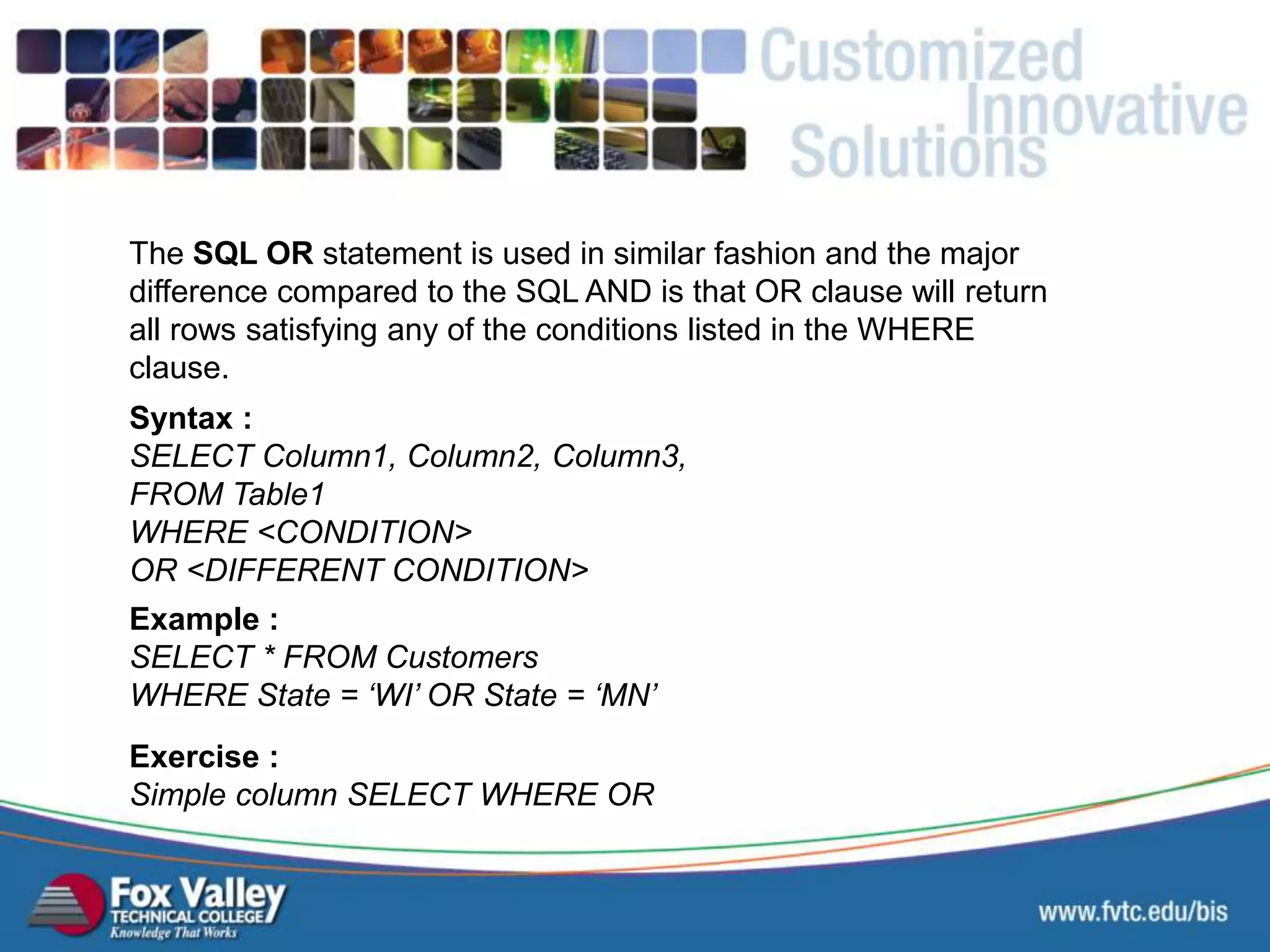
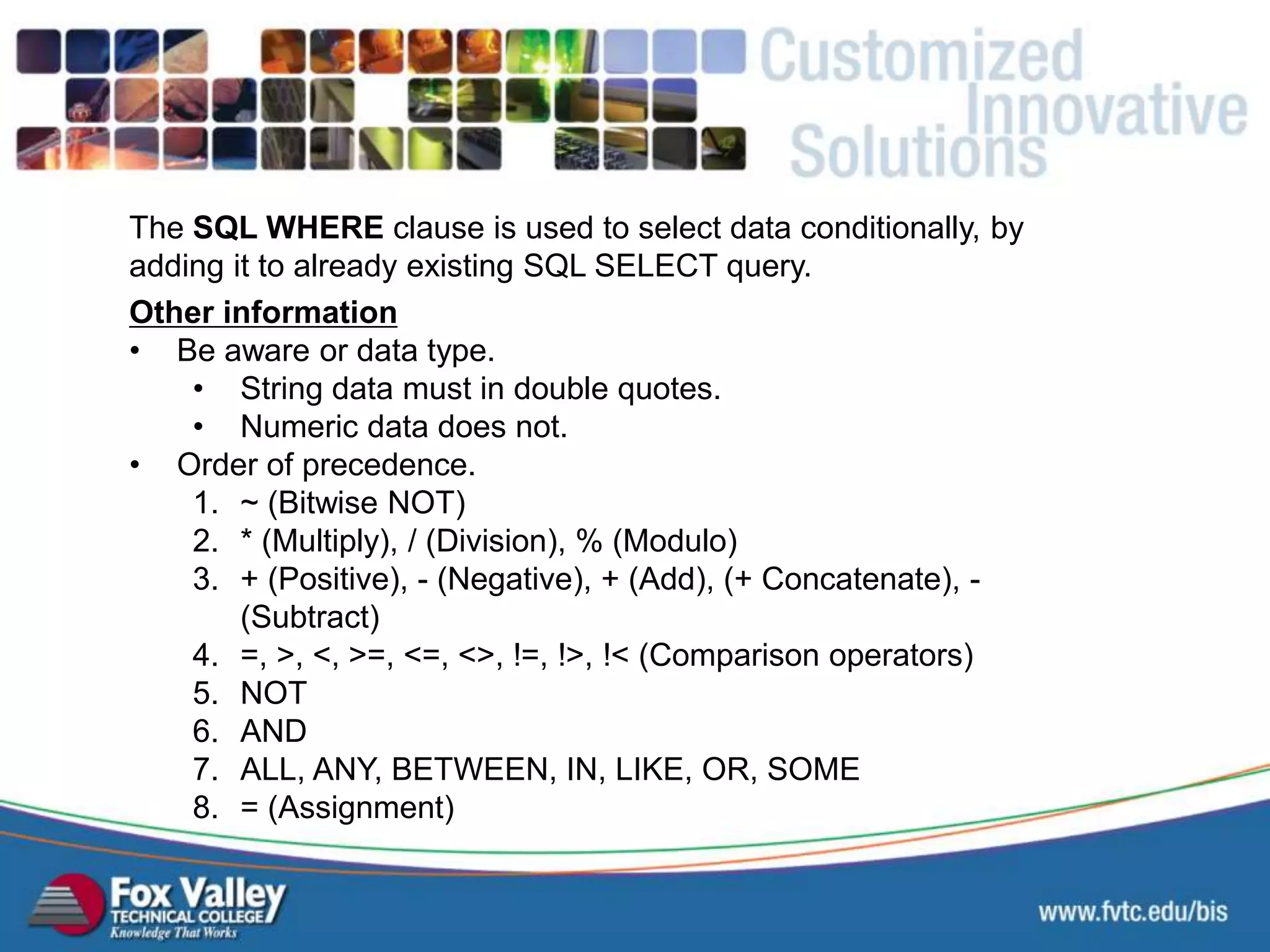
![BETWEEN - TRUE if the operand is within a range. test_expression [ NOT ] BETWEEN begin_expression AND end_expression EXISTS - TRUE if a sub query contains any rows. EXISTS {SELECT STATEMENT} IN - TRUE if the operand is equal to one of a list of expressions. test_expression [ NOT ] IN ( subquery | expression [ ,...n ] ) NOT - Reverses the value of any other Boolean operator. [ NOT ] boolean_expression SQL – SELECT - OTHER](https://image.slidesharecdn.com/silverstarsql-140601093408-phpapp01/75/SQL-Fundamentals-21-2048.jpg)
![LIKE - TRUE if the operand matches a pattern. match_expression [ NOT ] LIKE pattern [ ESCAPE escape_character ] % - Any string of zero or more characters. (WHERE title LIKE '%computer%' ) _ - Any single character. (WHERE au_fname LIKE '_ean') [ ] - Any single character within the specified range ([a-f]) or set ([abcdef]). (WHERE au_lname LIKE '[C-P]arsen' ) [^] - Any single character not within the specified range ([^a-f]) or set ([^abcdef]). (WHERE au_lname LIKE 'de[^l]%' ) SQL – SELECT - LIKE](https://image.slidesharecdn.com/silverstarsql-140601093408-phpapp01/75/SQL-Fundamentals-22-2048.jpg)








